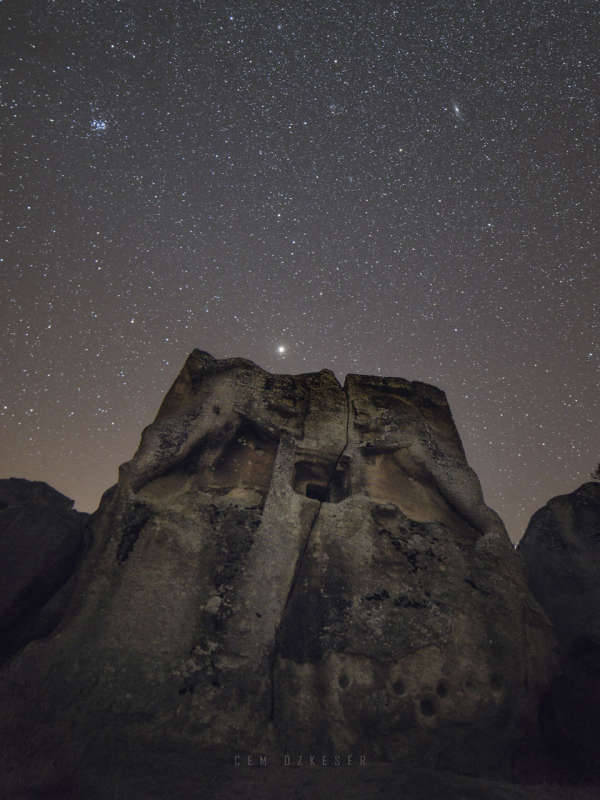
|
Credit & Copyright: Cem czkeser
Explanation:
Three very different -- and very famous -- objects were all captured in a single
frame last month.
On the upper left is the bright blue
Pleiades, perhaps the most famous cluster of stars on
the night sky.
The Pleiades (M45) is about
450
light years away and easily
found a
few degrees from Orion.
On the upper right is the
expansive Andromeda Galaxy,
perhaps the most famous galaxy -- external to our own -- on the night sky.
Andromeda
(M31) is one of few objects visible to the
unaided eye where you can see light that is millions of years old.
In the middle is
bright red Mars, perhaps the most famous planet on the
night sky.
Today Mars is at
opposition, meaning that it is opposite the Sun,
with the result that it is visible all night long.
In the foreground is an ancient tomb in the
Phygrian Valley in
Turkey.
The tomb, featuring
two
stone lions,
is an impressive remnant of a
powerful civilization
that lived thousands of years ago.
Mars, currently
near its brightest, can be
easily found toward the east just after sunset.
|
January February March April May June July August September October November December |
| ||||||||||||||||||||||||||||||||||||||||||||||||
NASA Web Site Statements, Warnings, and Disclaimers
NASA Official: Jay Norris. Specific rights apply.
A service of: LHEA at NASA / GSFC
& Michigan Tech. U.
Based on Astronomy Picture
Of the Day
Publications with keywords: Mars - pleiades - Andromeda galaxy
Publications with words: Mars - pleiades - Andromeda galaxy
See also:
- APOD: 2025 September 28 B Leopard Spots on Martian Rocks
- APOD: 2025 August 25 B The Meteor and the Star Cluster
- APOD: 2025 July 15 B Collapse in Hebes Chasma on Mars
- APOD: 2025 July 8 B The Pleiades in Red and Blue
- APOD: 2025 July 6 B The Spiral North Pole of Mars
- APOD: 2025 June 29 B Dark Sand Cascades on Mars
- APOD: 2025 June 22 B A Berry Bowl of Martian Spherules
